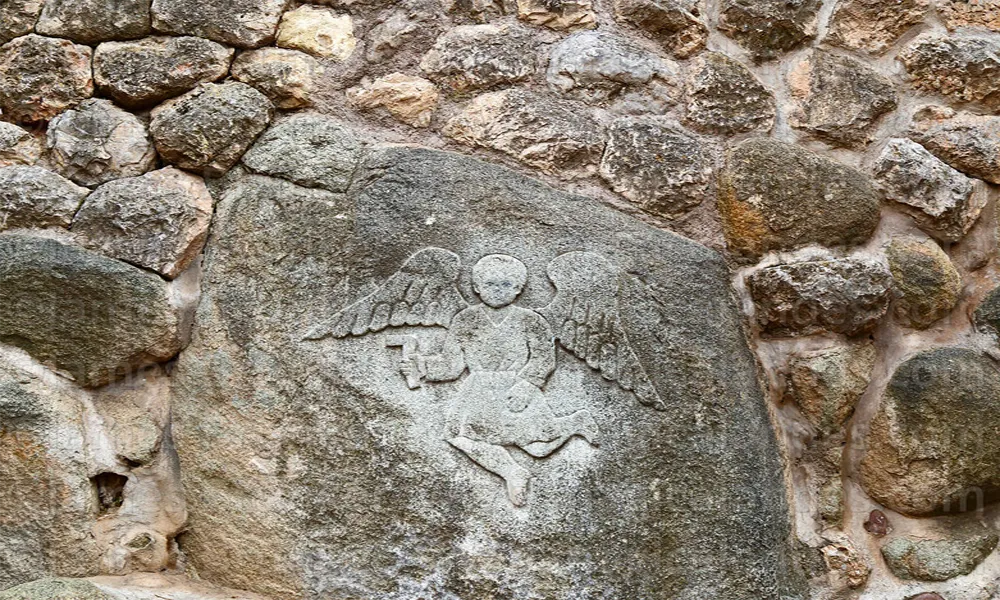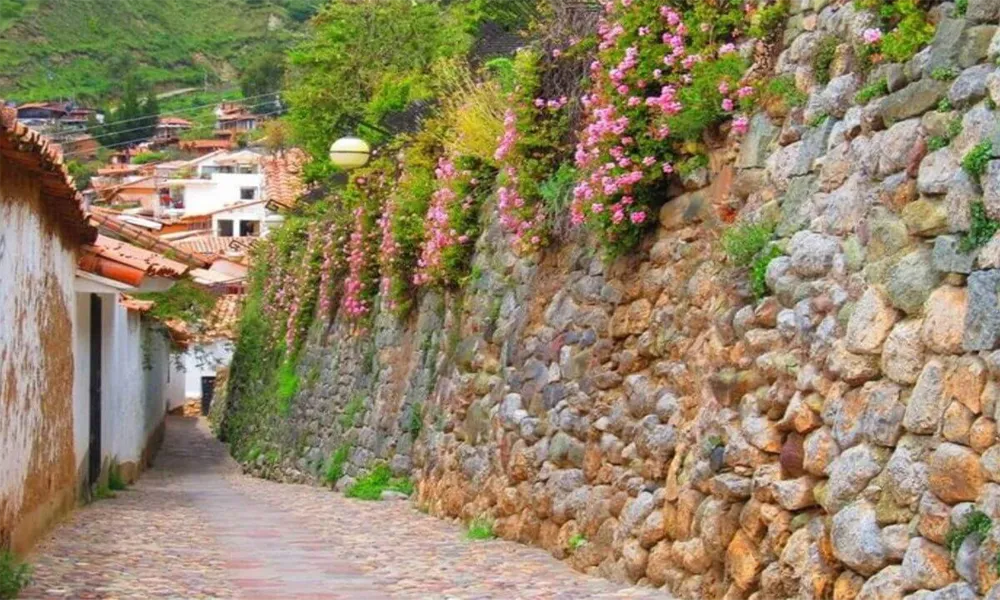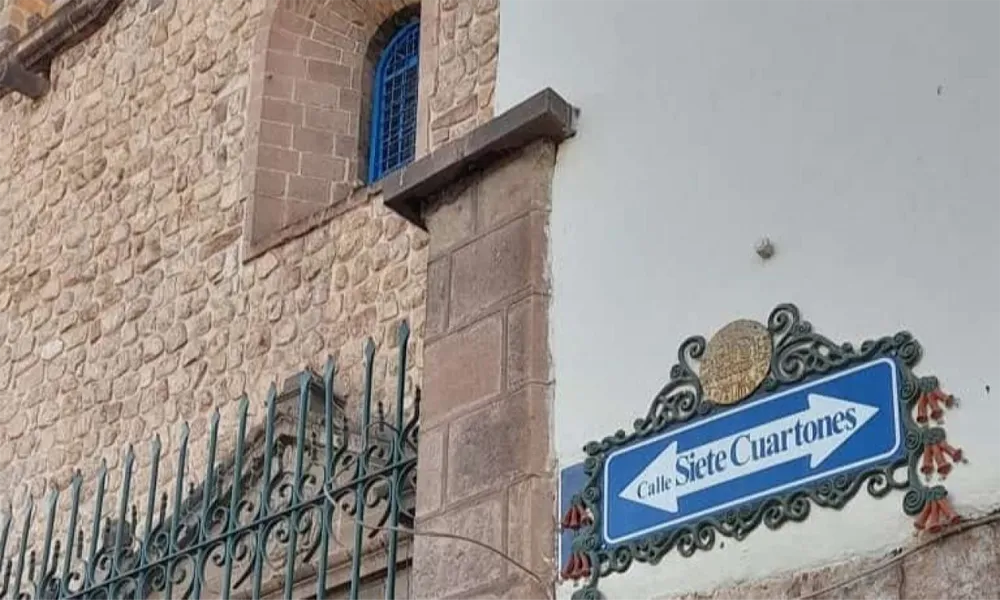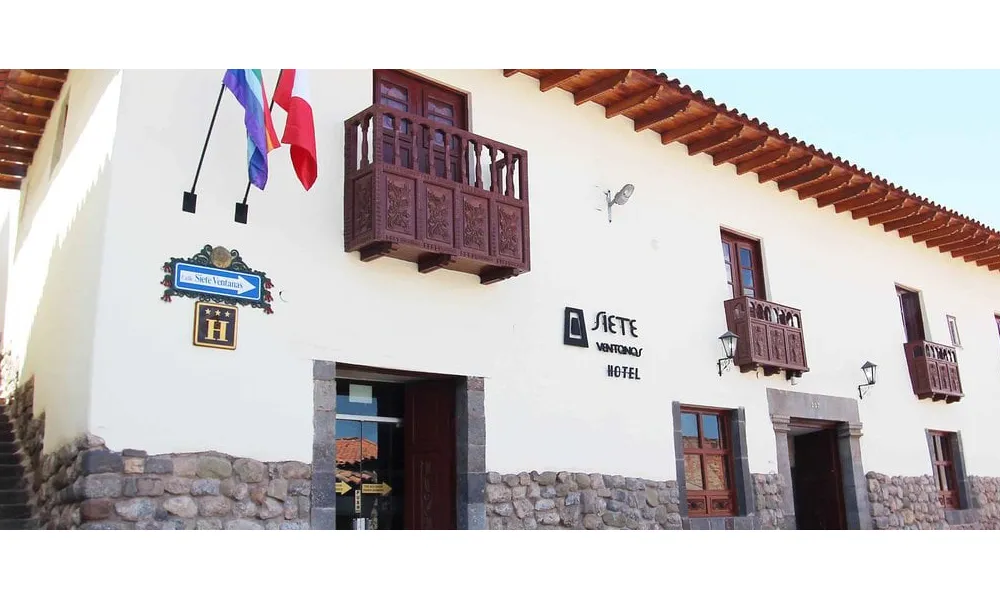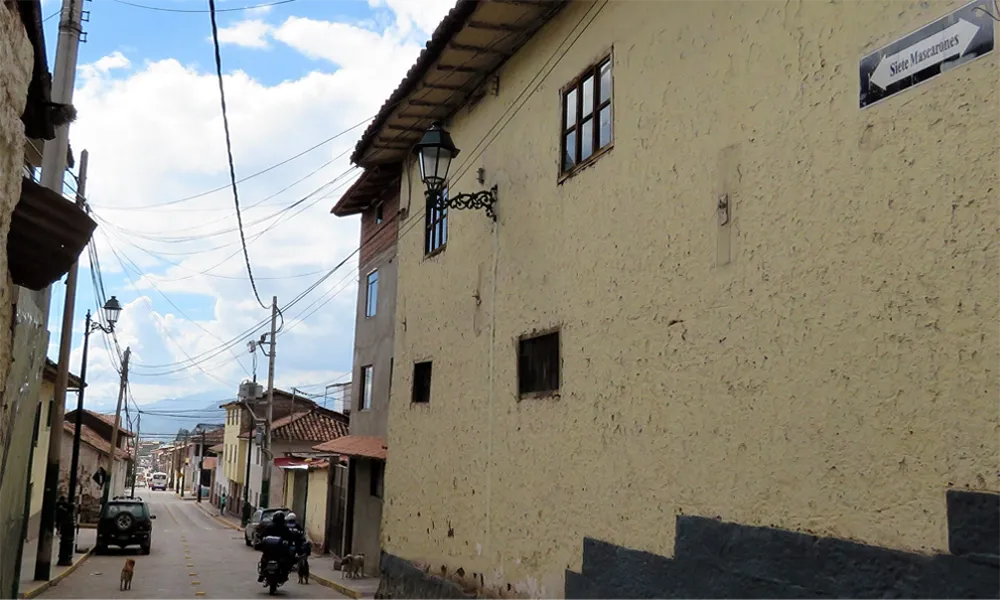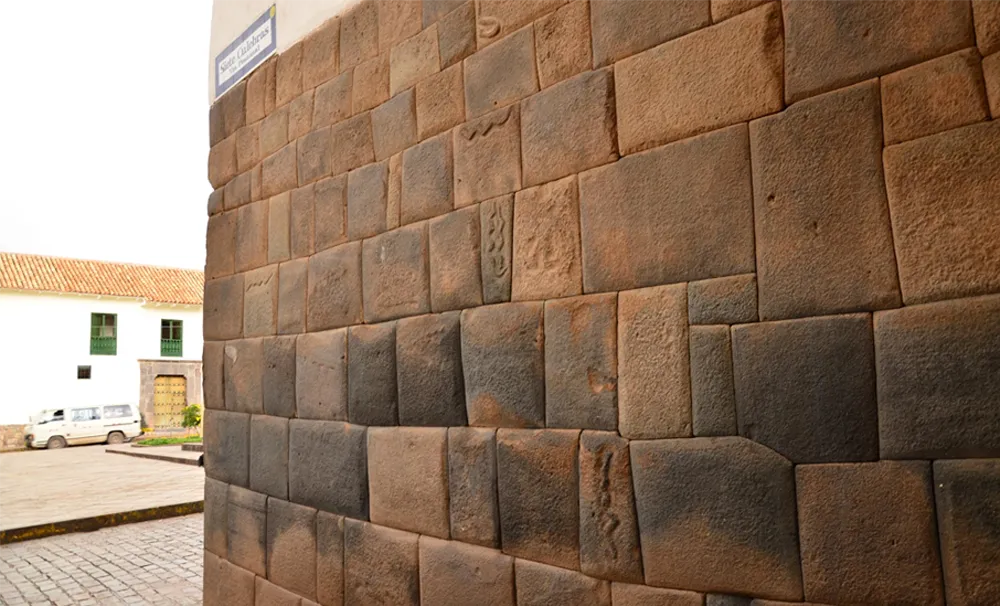
Cusco, capital of the Tahuantinsuyu and considered the “navel of the world” by the Incas, holds beneath its streets and mountains a secret that has sparked curiosity since colonial times: the Chincanas. These underground tunnels, shrouded in mystery and legend, are believed to have connected the religious, military, and administrative centers of the sacred city.
Among them, the possible connection between the imposing ceremonial fortress of Sacsayhuamán and the Temple of the Sun (Coricancha), the spiritual center of the empire, stands out. Today, thanks to recent research using modern technology, this ancient myth is beginning to have archaeological support.
📜 Origin and meaning of the Chincanas
The word chincana comes from Quechua and means “labyrinth” or “place where one gets lost.” The term reflects not only the complexity of the underground passages, but also the sense of mystery they convey.
Colonial chroniclers already mentioned the existence of these tunnels. Garcilaso de la Vega recounted in his Royal Commentaries that Cusco had hidden passages that connected temples and plazas, allowing one to move about unseen above ground.
Oral tradition also recorded these stories: peasants and residents of Cusco passed down tales of explorers who ventured into the chincanas and never returned, fueling their enigmatic character.
🏯 The Sacsayhuamán – Coricancha Connection
Modern archaeological research has confirmed the existence of passages that directly connect Sacsayhuamán with Coricancha, two of the most important sites in Inca Cusco.
- Length: approximately 1,750 meters.
- Depth: between 1.4 and 2.5 meters underground.
- Additional routes: Branches have been detected to Muyumarca, Callispuquio, and possibly other areas of the historic center.
- Construction: The tunnels feature trapezoidal stone walls and roofs with carefully hewn rock beams covered with earth, invisible from the surface.
This design demonstrates that these were not improvised excavations, but rather a high-level architectural plan, integrated into the urban and symbolic organization of Cusco.
🔬 Recent Discoveries and Methodology
The team of Peruvian archaeologists led by Jorge Calero Flores and Mildred Fernández Palomino, in collaboration with the Municipality of Cusco, used modern tools to confirm the existence of the tunnels:
- Georradar (GPR): allowed the identification of underground voids and walls without the need for excavation.
- Acoustic tests: controlled impacts on the ground that generated echoes characteristic of hollow cavities.
- Topographic mapping: results were compared with colonial plans and historical descriptions.
Thanks to these techniques, it was confirmed that beneath the historic center of Cusco there are structures yet to be explored. Excavations planned for 2025 will seek to expand knowledge about their extent and function.
🎭 Function and Symbolism of the Chincanas
The role of chincanas within Inca society remains a subject of debate. The most widely accepted hypotheses include:
- Ceremonial Function: Connecting sacred sites in a spiritual journey that represented the connection between gods, priests, and the people.
- Strategic Route: Serving as escape routes or communication in the event of military conflicts.
- Transport of Treasures and Relics: Protecting valuable objects from the Andean worldview, such as idols, mummies, and golden corn.
- Cosmic Symbolism: The Incas conceived of three planes of existence: Hanan Pacha (upper world), Kay Pacha (underworld), and Uku Pacha (underground world). The tunnels would be physical and spiritual portals to Uku Pacha.
📍 The Chincana Chica and the Chincana Grande
🔹 The Chincana Chica
The Chincana Chica is the most accessible and safest of the known tunnels in Sacsayhuamán.
- Exact Location: It is located approximately 150 meters north of the walls of Sacsayhuamán, in a section where the natural rock reveals narrow entrances.
- Dimensions: It is a short and narrow tunnel, with passages between 2 and 5 meters long. Although small, it retains the mysterious atmosphere of true chincanas.
- Accessibility: It is open to the public and is included in the Sacsayhuamán tourist circuit. It is part of guided tours and is frequented by travelers seeking the experience of entering an Inca tunnel.
- Visitor Experience:
- It is recommended to enter with a flashlight, as the interior is dark.
- The passages are narrow and low, requiring you to crouch down and creating a sense of adventure.
- The route is short, so there is no risk of getting lost.
Cultural significance: Although this is a small version, it allows us to imagine what the larger tunnels were like and keeps alive the tradition of chincanas as portals to the hidden.
🔹 Chincana Grande
Chincana Grande is, without a doubt, the most enigmatic and feared of Cusco’s chincanas.
- Location: It is located about 200 meters from Chincana Chica, in a rocky area that is difficult to access.
- Dimensions: It is much larger and more complex, with branches that go underground and, according to tradition, reach as far as Coricancha. Some estimates attribute its depth to tens of meters and passages that stretch for miles.
- Danger:
- Accounts tell of numerous curious people who ventured into it and never returned.
- It is said that the labyrinth is so intricate that even with ropes and torches, it was impossible to find one’s way.
- Because of these disappearances, during the 20th century, authorities and residents decided to seal the entrances with dynamite to avoid tragedies.
- Associated legends:
- Stories speak of hidden treasures, such as the “golden corn” of the Incas.
- Some travelers of the past recounted that the tunnels led directly into the Coricancha cellars, reinforcing the idea of an underground connection.
- There is a legend of three young men who entered with a long rope and never returned; only the rope was found cut at the entrance.
- Current status: Today, Chincana Grande is closed to the public for safety reasons. There are no tourist access points, and any unauthorized exploration is prohibited due to the risk of collapse and disorientation.
🔎 Key differences between the two
Characteristics Chincana Chica Chincana Grande
Location 150 m from the walls of Sacsayhuamán 200 m from Chincana Chica
Dimensions Small, short, narrow tunnel. Extensive, labyrinthine, and deep.
Accessibility Open to the public, part of the tourist circuit. Closed and sealed with dynamite.
Experience Safe, brief, suitable for tourists with a flashlight. Dangerous, with legends of disappearances.
Significance Recreates the underground Inca atmosphere. Considered the “true chincana” and a symbol of mystery.
🌌 Legends and myths surrounding the Chincanas
Chincanas are not just stone passages; they are also portals to the collective imagination of Cusco. Over the centuries, they have become the protagonists of stories that blend history, myth, and spirituality. These narratives have been passed down from generation to generation, and although they lack archaeological evidence, they are an essential part of their appeal.
🌽 The Golden Corn
One of the most widespread legends claims that deep within the tunnels, the Incas hid a cob of solid gold, a symbol of fertility, abundance, and power.
- This “golden cuz” was allegedly deposited in Chincana Grande to protect it from the arrival of the conquistadors.
- For the inhabitants, this sacred object represented not only material wealth, but also the continued agricultural power of the Tahuantinsuyu.
- Over time, explorers and treasure hunters tried unsuccessfully to find this golden corn. This belief remains alive and is one of the reasons why many ventured into the tunnels.
🧵 The Missing Youth
Another story deeply rooted in popular memory is that of three boys who, driven by curiosity, entered Chincana Grande armed with ropes and torches
- .It is said that they advanced for hours through the passages without finding a way out.
- When relatives attempted to rescue them, they found the guide rope cut at the entrance, but the young men were never heard from again.
- Some accounts claim that one of them appeared days later in a state of delirium, in an area near Coricancha, reinforcing the belief that the tunnels connected the two sites.
- This episode so marked the community that colonial and later republican authorities began sealing the entrances for fear of further tragedies.
🕯️ Apparitions and Voices in the Darkness
In addition to disappearances, many residents claim to have heard voices, singing, and footsteps inside the chincanas.
- Local guides report that some visitors feel chills, as if “someone invisible” were accompanying them in the darkness.
- Others claim to have seen mysterious lights or shadows moving in the depths.
- These accounts reinforce the idea that the tunnels are more than simple constructions: they are spaces charged with spiritual energy.
Esoteric Connections
Some alternative researchers and esoteric movements maintain that the chincanas were not ordinary tunnels, but rather part of a global system of occult knowledge.
- According to these theories, they could be symbolically connected to the pyramids of Egypt, temples of India, or monuments of Mesoamerica.
- It is suggested that they were part of an energetic network that united the great ancient civilizations.
- Although they lack scientific support, these ideas attract mystical travelers and spiritual explorers who come to Cusco in search of transcendent experiences.
🛡️ Protective Tunnels
Another popular belief claims that the tunnels were used as secret escape routes during attacks. It is said that the Incas could quickly evacuate priests, nobles, and treasure to safe places.
- This would explain why the chincanas not only connected temples but also strategic areas of the city.
- Hence the myth that the Spanish never managed to find the true treasure of the Incas: because it would have been hidden deep within these labyrinths.
🌠 A Living Legacy Between Myth and History
The legends of the chincanas don’t just speak of lost treasures or mysterious disappearances; they reflect the Andean people’s deep relationship with the sacred, the hidden, and the unexplained.
Today, beyond archaeology, these stories are part of Cusco’s intangible cultural heritage, passed on during every guided tour, in local conversations, and in popular memory.
Exploring Chincana Chica isn’t just about entering a stone tunnel: it’s about entering a universe where history and legend intertwine, reminding us that in Cusco, the visible and the invisible have always coexisted.
🙌 Practical tips for travelers
If you’re visiting Cusco and want to explore the chincanas:
- ✅ Head to Chincana Chica, in the Sacsayhuamán area.
- 🔦 Bring a flashlight and comfortable shoes, as the passages are narrow and dark.
- 👨🏫 Hire a local guide to hear not only historical facts but also legends passed down through generations.
- 🚫 Do not attempt to access Chincana Grande: it is sealed and dangerous.
- 🎟️ This visit is included in the Cusco Tourist Ticket, which gives you access to Sacsayhuamán and other archaeological sites.
❓ Frequently Asked Questions
Where are the chincanas located?
In the Sacsayhuamán archaeological site, with connections to Coricancha and possibly other areas of the historic center.
Can I visit them freely?
Only the Chincana Chica is open to the public. The Chincana Grande is closed for security reasons.
Is it dangerous to enter?
The Chincana Chica poses no major danger if you are accompanied and guided. The Chincana Grande, on the other hand, is risky and not accessible.
Are they related to the Andean worldview?
Yes. For the Incas, the tunnels represented a connection to Uku Pacha (the underworld), a fundamental part of their spirituality.
Can archaeological remains be found inside?
Research is still ongoing. What is confirmed is that the tunnels are real and were designed with architectural precision.
The Chincanas of Sacsayhuamán are much more than stone tunnels: they are passages to the ancestral memory of Cusco. Its existence confirms the complexity of Inca urban planning and keeps alive the magic of the legends that have accompanied the people of Cusco for centuries.
Visiting Chincana Chica is a unique opportunity to experience this hidden world and feel that, beneath every stone, the Incas left messages still waiting to be deciphered.
Excavations in the coming years promise to reveal more secrets. And perhaps, in the near future, the chincanas will cease to be just a mystery and become a tangible testament to the greatness of the Tahuantinsuyu.


